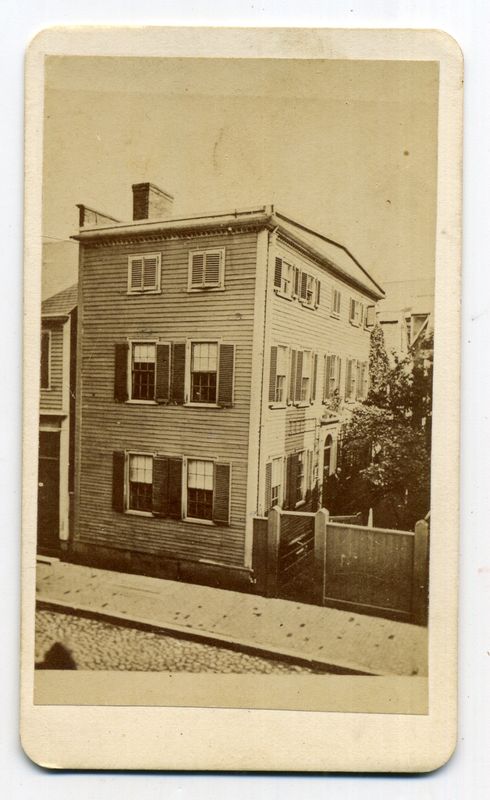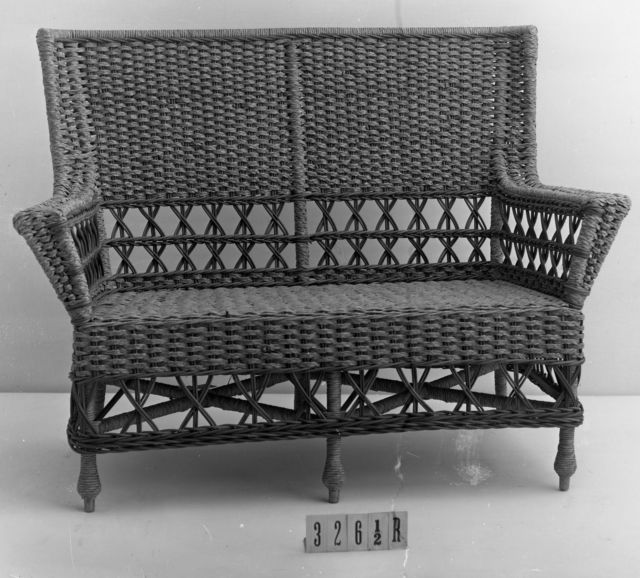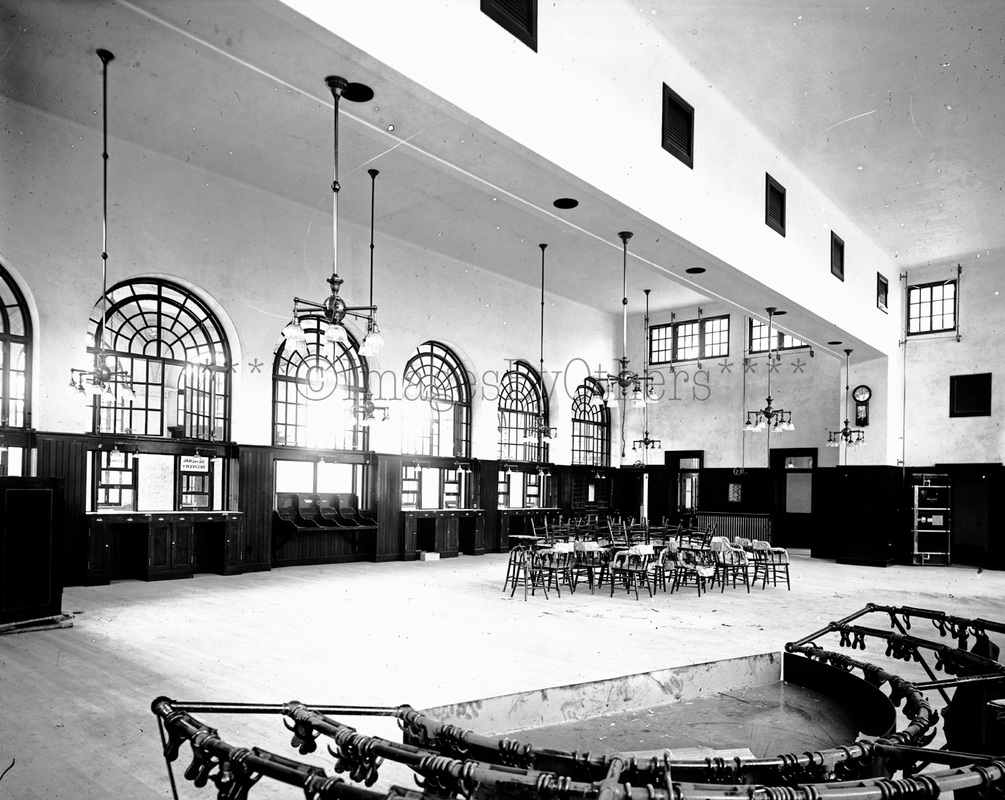Regional Historic Preservation Organizations
Image: House, probably built in the early 1800's, Boston, Massachusetts. This home was very unusual in that it faced sideways toward it's garden, and not toward the street. Since the home was only one room deep, all rooms from those on the main floor up to the attic would have had a garden view. Notice the fine arched doorway surround half way along the garden elevation. Albumin photograph, carte de visite (CDV) format, circa 1860
Regional organizations recognize that their major interests cross state borders. In many cases, they represent areas where there are no preservation organizations. The majority of these organizational descriptions were edited from their websites.
African American Heritage Preservation Foundation
Center of Preservation Research
Champlain Valley National Heritage Partnership
Historic New England
Legacy Cities Partnership
Preservation in Pink
Preservation Rightsizing Network
Center of Preservation Research
Champlain Valley National Heritage Partnership
Historic New England
Legacy Cities Partnership
Preservation in Pink
Preservation Rightsizing Network
-
African American Heritage Preservation Foundation
Mission Statement:
The African American Heritage Preservation Foundation, Inc. (AAHPF), a not-for-profit 501(c)(3) organization, which is dedicated to the preservation of African American history and historical sites, was established in June 1994 by E. Renee Ingram.
The AAHPF has been primarily engaged in activities that include the preservation, maintenance, and awareness of endangered or little-known African American historical sites in the Mid-Atlantic and Southeast Regions. In addition, AAHPF acts as a resource center for community groups, preservationists, genealogical and historical societies, not-for-profit organizations and government entities, nation-wide, needing assistance in the preservation of African American historical sites and history.
The Foundation has its own web site that provides information on its activities and serves as a research tool that is used by teachers and students ranging from middle school through postgraduate studies.
The African American Heritage Preservation Foundation, Inc. (AAHPF), a not-for-profit 501(c)(3) organization, which is dedicated to the preservation of African American history and historical sites, was established in June 1994 by E. Renee Ingram.
The AAHPF has been primarily engaged in activities that include the preservation, maintenance, and awareness of endangered or little-known African American historical sites in the Mid-Atlantic and Southeast Regions. In addition, AAHPF acts as a resource center for community groups, preservationists, genealogical and historical societies, not-for-profit organizations and government entities, nation-wide, needing assistance in the preservation of African American historical sites and history.
The Foundation has its own web site that provides information on its activities and serves as a research tool that is used by teachers and students ranging from middle school through postgraduate studies.
Image: Glass negative for an unidentified furniture manufacturer's catalog. Found in New England. Circa 1900-1910. Private collection.
-
The Center of Preservation Research
CITT's Role: The Center of Preservation Research preserves the past and examines the present to prepare for the future of our cities, suburbs, ranchlands, and even our wildlands through education, research, and practice.
The Center Of Preservation Research
Location:
1250 14th Street, 3rd Floor
Denver, CO 80202
Mailing Address:
Campus Box 126, PO Box 173364
Denver, CO 80217-3364
phone: 303-315-5871
fax: 303-315-5872
The Center Of Preservation Research
Location:
1250 14th Street, 3rd Floor
Denver, CO 80202
Mailing Address:
Campus Box 126, PO Box 173364
Denver, CO 80217-3364
phone: 303-315-5871
fax: 303-315-5872
-
Champlain Valley National Heritage Partnership
The Champlain Valley National Heritage Partnership (CVNHP) is nestled between the Adirondacks and the Green Mountains and stretches south to the Mohawk River and connects with the communities along the Richelieu River in Quebec. The national heritage area includes the interconnected waterways of Lake Champlain, Lake George, the Champlain Canal and portions of the Upper Hudson River in Vermont and New York.
The enabling legislation of the Champlain Valley National Heritage Partnership identifies the Lake Champlain Basin Program (LCBP) as the heritage area’s managing entity. While most of the CVNHP is located within the Lake Champlain Basin, the new designation extends southward into Bennington and Saratoga counties. The legislation also contains CVNHP activities to the counties that border Lake Champlain, Lake George, the Champlain Canal and the Upper Hudson River.
The LCBP works in partnership with government agencies from New York, Vermont, and Quebec, private organizations, local communities, and individuals to coordinate and fund efforts which benefit the Lake Champlain Basin's water quality, fisheries, wetlands, wildlife, recreation, and cultural resources. The LCBP believes that increasing access to recreation programs and providing cultural heritage learning opportunities builds a sense of stewardship for the environmental, historic, and social resources of the basin. Over the years, the LCBP has provided more than $1 million for cultural heritage and recreation projects.
Champlain Valley National Heritage Partnership
[email protected]
800-468-5227 (toll free in NY & VT)
or 802-372-3213.
An associated program:
Lake Champlain Basin Program
54 West Shore Road
Grand Isle, VT 05458
800-468-5227 (NY & VT)
or 802-372-3213
The enabling legislation of the Champlain Valley National Heritage Partnership identifies the Lake Champlain Basin Program (LCBP) as the heritage area’s managing entity. While most of the CVNHP is located within the Lake Champlain Basin, the new designation extends southward into Bennington and Saratoga counties. The legislation also contains CVNHP activities to the counties that border Lake Champlain, Lake George, the Champlain Canal and the Upper Hudson River.
The LCBP works in partnership with government agencies from New York, Vermont, and Quebec, private organizations, local communities, and individuals to coordinate and fund efforts which benefit the Lake Champlain Basin's water quality, fisheries, wetlands, wildlife, recreation, and cultural resources. The LCBP believes that increasing access to recreation programs and providing cultural heritage learning opportunities builds a sense of stewardship for the environmental, historic, and social resources of the basin. Over the years, the LCBP has provided more than $1 million for cultural heritage and recreation projects.
Champlain Valley National Heritage Partnership
[email protected]
800-468-5227 (toll free in NY & VT)
or 802-372-3213.
An associated program:
Lake Champlain Basin Program
54 West Shore Road
Grand Isle, VT 05458
800-468-5227 (NY & VT)
or 802-372-3213
-
Historic New England
(formerly Society for the Preservation of New England Antiquities, SPNEA)
From their website:
Our MissionWe serve the public by preserving and presenting New England heritage.
Historic New England is a museum of cultural history that collects and preserves buildings, landscapes, and objects dating from the seventeenth century to the present and uses them to keep history alive and to help people develop a deeper understanding and enjoyment of New England life and appreciation for its preservation.
Program AreasWe fulfill our mission through five key program areas:
141 Cambridge Street
Boston, Mass. 02114-2702
Phone: 617-227-3956
Fax: 617-227-9204
Direct phone numbersReceptionist: 617-227-3956
Membership: 617-994-5910
Development office: 617-994-5951
Our MissionWe serve the public by preserving and presenting New England heritage.
Historic New England is a museum of cultural history that collects and preserves buildings, landscapes, and objects dating from the seventeenth century to the present and uses them to keep history alive and to help people develop a deeper understanding and enjoyment of New England life and appreciation for its preservation.
Program AreasWe fulfill our mission through five key program areas:
- Historic Properties: Visit our thirty-six historic sites, spanning five states and four centuries of New England life. Hear the stories of the New Englanders who called these sites home, stroll through formal gardens, or visit a working farm. Historic New England offers scores of public programs at our sites each year, ranging from courses and workshops to walking tours, craft festivals, and concerts.
- Collections: With more than 110,000 objects Historic New England has the most comprehensive and best documented collection of New England decorative arts and household furnishings in the country. These collections, which date from the mid-seventeenth to the twentieth-first centuries, include the whole range of goods needed for day-to-day life, from furniture and clothing to cooking and heating equipment.
- Preservation Services: Historic New England's preservation services include caring for and managing our own thirty-six historic museums and working with private property owners to protect and maintain their old and historic homes. We advocate for the preservation of significant New England residential resources representing all time periods, architectural styles, and cultural stories.
- Education: Historic New England's school and youth programs, serving more than 45,000 students each year, receive national attention for the creative way in which they use historical resources to enrich learning. The programs are fun and multi-disciplinary, encouraging learning through a variety of approaches, including hands-on activities and role playing.
- Archives and Publications: Every year hundreds of researchers come to the Library and Archives to study the more than one million items that document New England's architectural and cultural history. The archival collections include photographs, prints and engravings, architectural drawings, books, manuscripts, and ephemera.
141 Cambridge Street
Boston, Mass. 02114-2702
Phone: 617-227-3956
Fax: 617-227-9204
Direct phone numbersReceptionist: 617-227-3956
Membership: 617-994-5910
Development office: 617-994-5951
-
Legacy Cities initiative
Legacy cities are older, industrial urban areas that have experienced significant population and job loss, resulting in high residential vacancy and diminished service capacity and resources.
Despite very real challenges, each city also has real assets--from strong cultural fabric and anchor institutions to abundant historic architecture and available land--that support their ongoing initiatives to strengthen their communities.Legacy cities are mostly concentrated in the Midwest and Northeast, with the majority in the states of Ohio, Michigan, New York and Pennsylvania.
LEGACY CITIES TODAYAlthough legacy cities underperform the nation in jobs, population growth and economic diversity, they are home to a number of assets that serve local communities and help them strengthen as centers of their metropolitan regions.
WHO WE AREThe Legacy Cities Partnership aims to establish a framework for the revitalization of legacy cities, improve the community of practice working on these issues, and change the policies that govern practice in these cities. The Partnership was founded by The American Assembly, the J. Max Bond Center on Design for the Just City, and the Center for Community Progress.
We believe that these cities can thrive once again if the assets, energy, capacity and love for these places at the local level can be nurtured by effective shifts in public policy, coordinated advocacy, mutual learning about what works, and careful, strategic implementation.
For a related program, please refer to the Preservation Rightsizing Network
Despite very real challenges, each city also has real assets--from strong cultural fabric and anchor institutions to abundant historic architecture and available land--that support their ongoing initiatives to strengthen their communities.Legacy cities are mostly concentrated in the Midwest and Northeast, with the majority in the states of Ohio, Michigan, New York and Pennsylvania.
LEGACY CITIES TODAYAlthough legacy cities underperform the nation in jobs, population growth and economic diversity, they are home to a number of assets that serve local communities and help them strengthen as centers of their metropolitan regions.
WHO WE AREThe Legacy Cities Partnership aims to establish a framework for the revitalization of legacy cities, improve the community of practice working on these issues, and change the policies that govern practice in these cities. The Partnership was founded by The American Assembly, the J. Max Bond Center on Design for the Just City, and the Center for Community Progress.
We believe that these cities can thrive once again if the assets, energy, capacity and love for these places at the local level can be nurtured by effective shifts in public policy, coordinated advocacy, mutual learning about what works, and careful, strategic implementation.
For a related program, please refer to the Preservation Rightsizing Network
Image: New post Office, Chelsea, Massachusetts. Ca. 1910. From a glass negative. Private collection.
-
Preservation in Pink
A remarkable website. Valuable information and entertaining opinions. Some focus on New England.
Condensed from the website:
Life Through The Eyes Of A Historic Preservationist, Influenced By Coffee, Flamingos, And The Belief In The Strength Of Place And Community....
Condensed from the website:
Life Through The Eyes Of A Historic Preservationist, Influenced By Coffee, Flamingos, And The Belief In The Strength Of Place And Community....
-
Preservation Rightsizing Network
The Preservation Rightsizing Network (PRN) works in legacy cities to preserve local heritage and revitalize the built environment. We provide ways to engage, share best practices, and develop new tools to strengthen communities for the future. We are a diverse group of preservation advocates & planners working in Baltimore, Chicago, Detroit, New York and more of America’s legacy cities....'
Preservation in Legacy Cities Toolkit: We are developing a collection of best practices, case studies, and practical tools that preservationists and non-preservationists alike will find useful.
Preservation in Legacy Cities Toolkit: We are developing a collection of best practices, case studies, and practical tools that preservationists and non-preservationists alike will find useful.
For a related program, please refer to the Legacy Cities Initiative



